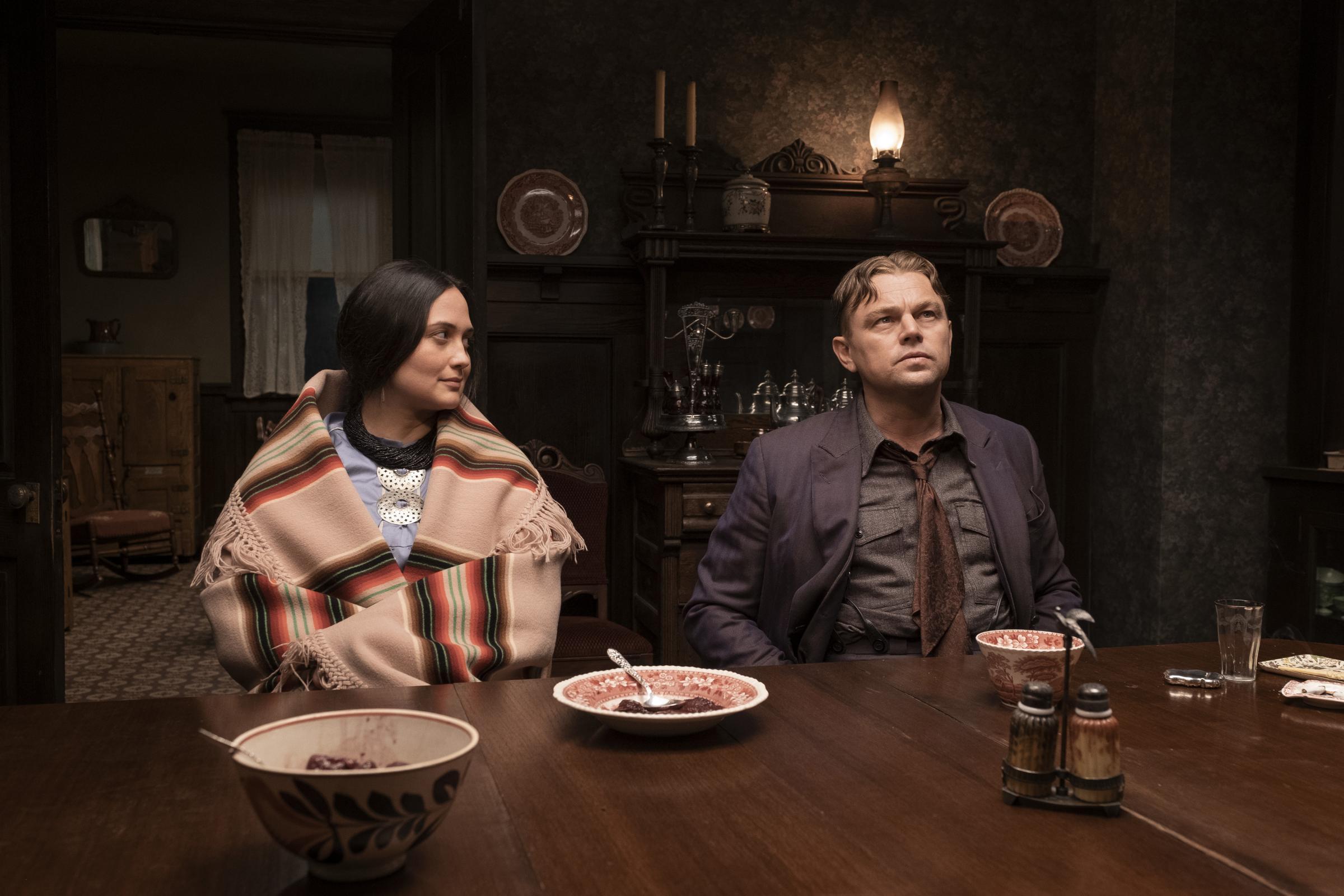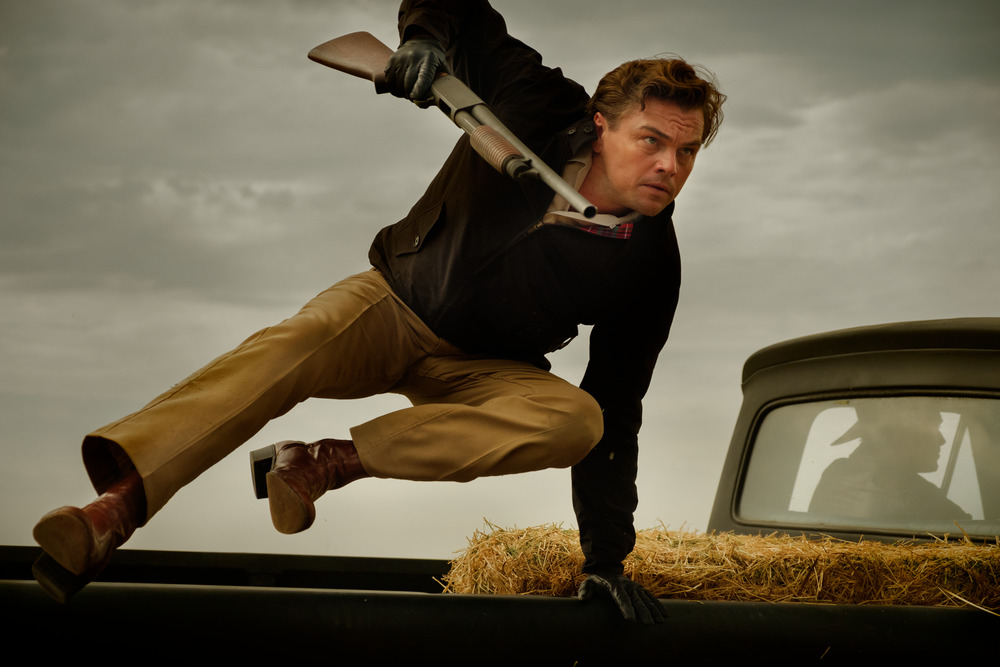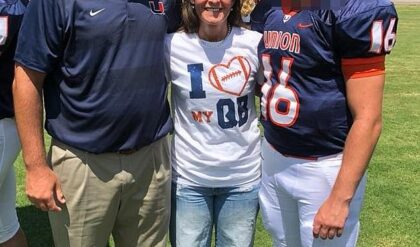When you see a very young actor in a movie or on television, there’s no way to know if you’ll have the pleasure of watching his gifts flourish in the coming years.
Performers who start out as kids or young teenagers often flame out before adulthood; they may lose the spark that makes them charming, growing out of their cuteness into an awkwardness that doesn’t translate well onscreen. But Leonardo DiCaprio, whose career began with small television roles in the early 1990s, has been luckier than many, though luck is only one of the ingredients that has saved him. His skills and his instincts, clear almost from the beginning, have become more intricately shaded over the years, and even today it’s as if he’s still somehow growing into them. His two breakthrough roles hit three decades ago in the same year, 1993: In This Boy’s Life, released that April, he played a teenager stuck under the boot of his abusive stepfather. And in What’s Eating Gilbert Grape, released that December, he gave us a very different teenage character, a mentally disabled youth who’s about to turn 18, though he’ll never be able to live independently in the world. Together, these performances changed the shape of DiCaprio’s career. Among his generation, or perhaps any, his longevity—he’s enjoyed a three-decade stretch of steady work with very few breaks and no random dips in popularity—is a Hollywood anomaly.
Because time moves backward for no one, least of all actors, for kicks let’s begin in the present, with a role whose roots reach back to 1993. In Martin Scorsese’s Killers of the Flower Moon, based on David Grann’s book about the heinous murders of wealthy Osage Indians at the hands of white men in early 1920s Oklahoma, DiCaprio plays Ernest Burkhart, the nephew of crooked cattle baron William Hale, played by Robert De Niro. Hale has persuaded Ernest to court Mollie Kyle (Lily Gladstone) with the aim of marrying into her oil-rich family—but Hale also wants his nephew to help kill off that family, including Mollie, one by one.

Lily Gladstone and Leonardo DiCaprio in Killers of the Flower MoonApple TV+
DiCaprio, born in 1974, is now nearing 50, and his role in Killers is perhaps the first one in which he looks truly middle-aged: as Ernest, he’s arranged his mouth into a permanent half-moon frown—it’s an affect that makes his performance seem a little forced, though he manages to navigate Ernest’s emotional turmoil gracefully enough. Ernest is a not-very-bright man who loves money—he states it both plainly and indirectly, in scene after scene—but he also loves the wife whom his uncle has half-persuaded him to kill; the conflict between his love and the tragic duty with which he’s been entrusted plays out in the moral cloudiness of his eyes. DiCaprio and De Niro have worked together twice before, most recently in Jerry Zak’s 2016 Marvin’s Room. But it was This Boy’s Life that led directly to DiCaprio’s status as one of Scorsese’s signature actors: in that movie, De Niro played the bullying stepfather Dwight—nemesis of DiCaprio’s wayward teenager Toby—and was so impressed with his young co-star that he urged his longtime collaborator Scorsese to consider working with him.
The Scorsese–DiCaprio partnership has yielded six films, beginning with 2002’s Gangs of New York, a folk-tale history of old Manhattan, in which DiCaprio played Amsterdam, an orphan out for vengeance against neighborhood kingpin Bill the Butcher, played by Daniel Day-Lewis. DiCaprio has done good work with Scorsese—he was entertaining as the crooked highflying investment god Jordan Belfort in The Wolf of Wall Street—but his turn as the young Howard Hughes, in The Aviator, is my favorite of the Scorsese–DiCaprio collaborations. The Aviator unapologetically romanticizes Hughes, an engineer, movie mogul, pilot, and very weird guy, downplaying his paranoia and cruelty. DiCaprio lends his version of Hughes a touching strangeness. He’s more handsome than Hughes ever was; his eyes sometimes look inhumanly blue, like the designs on a Delft plate. DiCaprio plays Hughes in the era before he entered the realm of true madness, though his eccentricities, anxieties, and compulsions had already begun to rule him. In two scenes, he’s barricaded himself off from the world, in need of rescue; in each case, an old girlfriend (one is Cate Blanchett’s Katharine Hepburn, the other Kate Beckinsale’s Ava Gardner) steps in to help. He presents Hughes’ gratitude toward each as a kind of confused tenderness. The real Howard Hughes was a piece of work, and a mess. But DiCaprio embodies him as a complex human being deserving not just of our curiosity but also our sympathy.
As an actor, DiCaprio earned the A-list director seal of approval early on, having been sought out not just by Scorsese but by Christopher Nolan (Inception), Steven Spielberg (Catch Me If You Can), Clint Eastwood (J. Edgar), and Quentin Tarantino (Django Unchained and Once Upon a Time in Hollywood). Not all of those performances are great: in J. Edgar, in particular, DiCaprio had the unenviable job of painting a sensitive portrait of J. Edgar Hoover, a vile little man. But more often than not, DiCaprio carries the day with his charm, as a flirty grifter in Catch Me If You Can, or as the has-been fictional TV star Rick Dalton in Once Upon a Time in Hollywood. And he’s perfect as the the dazzling center of Baz Lurhrmann’s beaded-fringe extravaganza The Great Gatsby. Luhrmann’s adaptation is largely disliked by those who see F. Scott Fitzgerald’s novel as a scolding tale about the perils of having too much money. But it’s less an adaptation of Fitzgerald’s novel than a movie version of Jay Gatsby himself, a figure with all the shimmering allure of a diamond-studded gold pocket watch. DiCaprio plays Gatsby as a self-invented czar of charm in an art deco tuxedo, capturing the character’s silk-tie artificiality as well as his cursed loneliness. He lends melancholy glamour to this appropriately over-the-top movie.

Leonardo DiCaprio in Once Upon a Time in HollywoodCourtesy of Sony
DiCaprio is even better in the earlier movie he made with Luhrmann, as the lovesick swain of the ardently romantic 1996 Romeo + Juliet: With Claire Danes’ Juliet as the object of his lovesick gaze, he’s the ultimate tragic teenager, so beautiful he glows like a night light. This is one of two films that made DiCaprio a 1990s teen heartthrob; the other is James Cameron’s Titanic, from 1997, a movie of enduring popularity that’s really, if you look at it with even a smidgen of critical discernment, an overworked jumble of sentimentality and technical whiz-bangery. That said, when Titanic was made, DiCaprio and his costar Kate Winslet were two of the most beautiful beings on the face of the planet. Their radiance endures even when the movie drags.
Which brings us, in our time machine, nearly back to 1993, and the two roles that kicked off DiCaprio’s ascent. In 1993, he looked younger than his age at the time, 19. His reedy build suggested preteen lankiness; his complexion seemed to have the texture of silk onscreen, as if it had never seen a day of acne. He was the ideal actor to play Arnie Grape in Lasse Hallström’s What’s Eating Gilbert Grape, the needy but eternally innocent younger brother to Johnny Depp’s beleaguered, protective Gilbert. Hallström’s filmmaking style here has that slightly glossy veneer that makes so many films of the late 1980s and early 1990s feel overworked and vaguely artificial. But that doesn’t mar work that Depp and DiCaprio, both superb, do here.
It’s hard to say if anyone would make a movie like Gilbert Grape today; its depiction of a disabled teenager as an eternal dependent could be seen as pitying. But the truthfulness of DiCaprio’s performance, and his insistence on preserving the character’s dignity, felt fresh and revolutionary at the time, and it’s still remarkable today. He captures Arnie’s windmilling joy, but also his semi-awareness that the world has somehow left him behind. And as Toby in This Boy’s Life—a stand-in for Tobias Wolff, on whose memoir the movie was based—DiCaprio walks the slender line between being a too-much-for-everyone bratty teenager and a fatherless kid who’s merely trying to swagger his way out of his own sadness. It’s easy to look at this performance today—to take the measure of those youthful, chiseled cheekbones, and those eyes capable of shifting from calculating to crestfallen in a millisecond—and claim to see DiCaprio’s destiny as a star. But life and fame don’t always follow a predictable trajectory. To watch these wonderful, youthful performances is to see the ghostly outline of a great future career. That DiCaprio actually brought it to life, and continues to keep it whirring 30 years later, is the kind of Hollywood story you wouldn’t dare invent. It’s a dream we saw coming, and for once, we were actually right.




